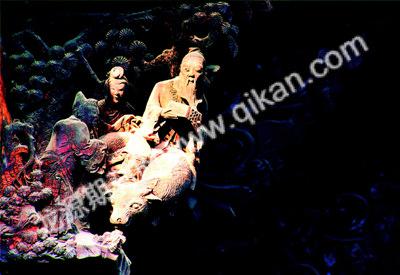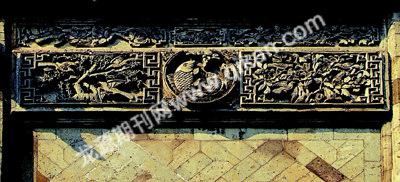An 800-Year-Old Residence
2009-06-08WuXuhuaWeiXilong
Wu Xuhua Wei Xilong

The 800-year-old Lu Mansion in Dongyang in the central Zhejiang is more than an architectural masterpiece. It has been listed as a national intangible cultural heritage recently. A concise description by Zheng Xinmiao, president of Palace Museum in Beijing, aptly defines its cultural value: the Lu Mansion is the folk palace.
The success of the Lu family goes back 800 years ago, though the residence was first built in the Ming Dynasty (1368-1644) and expanded in the following centuries through the Qing Dynasty (1644-1911). During the two dynasties, the family produced more than 150 successful scholars including 27 metropolitan graduates that passed the imperial examination and became government officials. Their political fortunes came back at the roots: the family compound took shape. At the highest period, the number of rooms within the compound added up to more than 1,000.
Today, the mansion measures 320 meters in length divided into two major sections following a central axle and 20 plus buildings still stand. The compound is composed of two parts: the front part has four rows of houses extending for 180 meters along the central axle and the back part has five rows of houses extending 140 meters. Between every two rows of houses are a court and the two major sections are separated and connected by a gate. The first part is designed for rituals, where the family used to meet for important discussions, receptions, memorial rites. The second part was the living quarters.
Experts say that the Lu Mansion was erected and expanded by dozens of generations of descendents according to a master plan that must have existed very early and must have been followed over centuries. It is firmly believed that the mansion cannot have expanded to its grandest scale without a master plan in the first place.
However, the architectural styles of the mansion reflect different ages, trends and techniques, all unified under a general theme. Today, the whole compound represents an architectural harmony and local features such as simplicity, elegance and restraint. Unlike the royal palace in the capital city which highlights glaring grandeur and glamour, the folk palace in Dongyang has outdoor courts paved with pebbles, white walls and black roof tiles in a style of peace and serenity. Some experts point out that the architectural philosophy adopted by the Lu family embodies the cultural essence of Confucius and tradition.

Wood Sculpture
The most prominent characteristic of the family mansion is its several tens of thousands of woodcarving pieces everywhere on the buildings. In a sense, the mansion serves as a woodcarving museum of Dongyang, traditionally famed for its woodcarving masters and masterpieces. Experts who have visited the mansion are all amazed by the sophisticated and ingenious workmanship of the sculptures. Fortunately, the woodcarvings have survived the Cultural Revolution (1966-1976), the most destructive period in the second half of the 20th century in China. During the ten-year tumult, much of the residence was used as warehouses and offices of a rural co-op.
Protection
A protection and salvage project started in the 1980s. More conservation work followed. About 70 families were later vacated from the site and a refurbishment project was executed before part of the residence opened as a tourism attraction. However, the mansion today is different from what it used to be. In the past, the Lu Mansion occupied a land of 500 mu (about 33 hectares) and three groups of buildings circled the Lu Family Memorial Temple in the center, each clinging to its own central axle. The original mansion used to have more than 40 gardens, libraries and temples and 26 memorial archways.
There is a long way to go for further conservation of the unique architecture as a whole. Recently, a new conservation strategy has been formulated. It focuses on the key structures within the mansion and plans to dredge a river that traverses the mansion ground. But experts say that conservation needs to take into account peripheral areas beyond the core ground. Moreover, the Lu Mansion needs a general ambiance that embraces it. The river system, land, climate changes as well as residents in the village are also important factors to be considered for the conservation of the mansion. □
